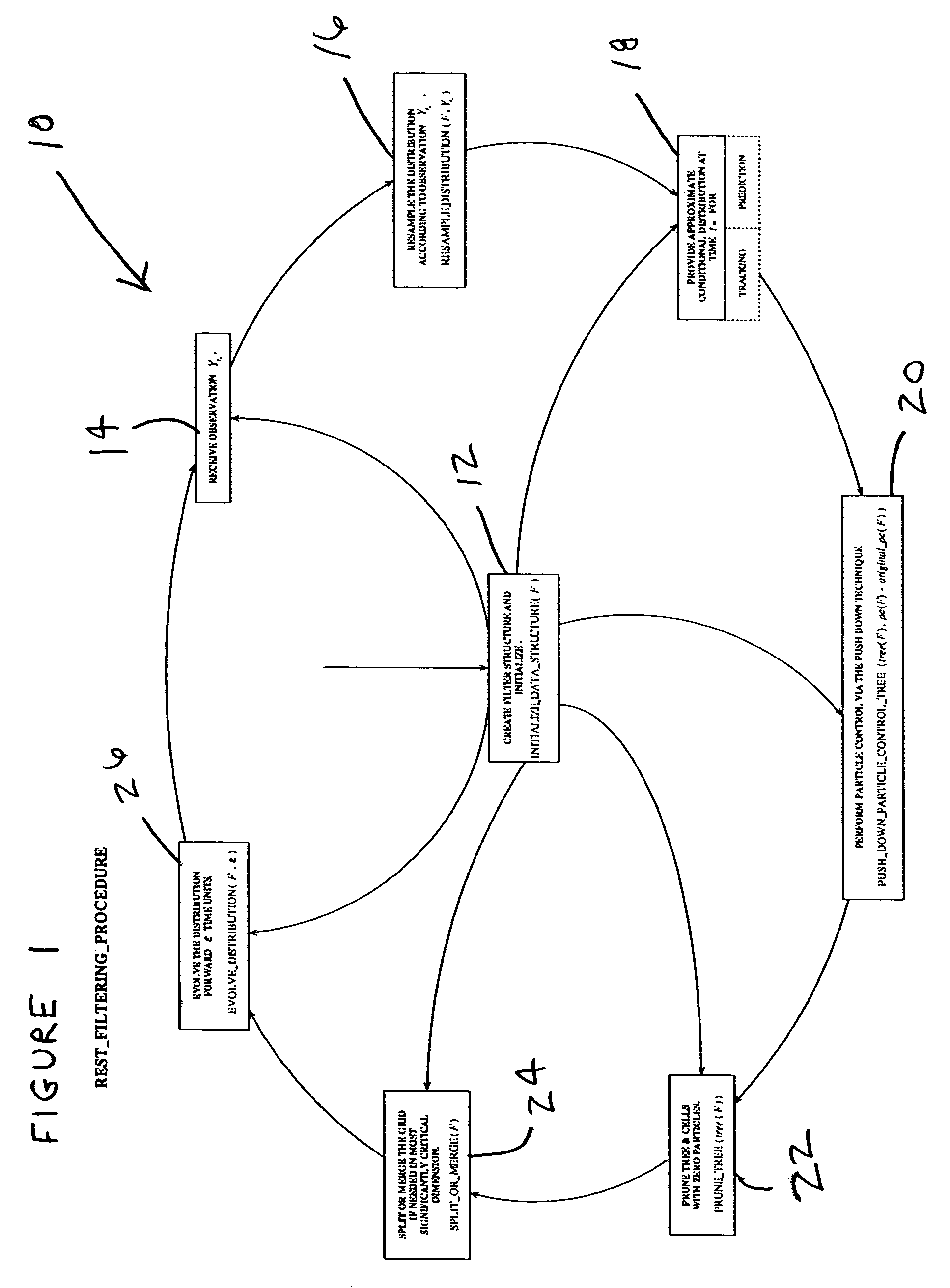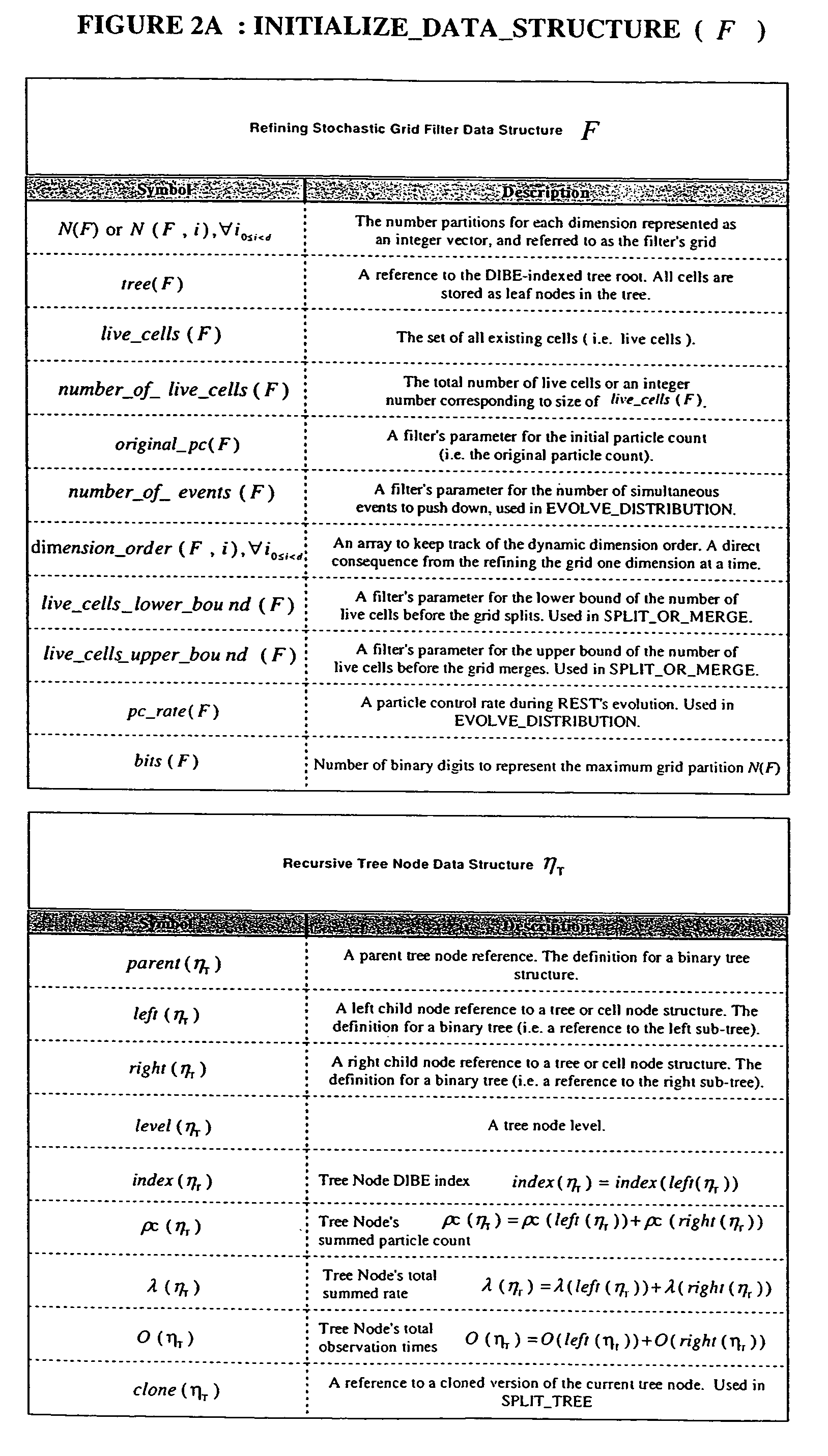Refining stochastic grid filter
a filter and stochastic grid technology, applied in adaptive control, instruments, code conversion, etc., can solve problems such as matrix instability and brittleness, inability to store densities, and partial one-dimensional acoustic observations, so as to reduce the combined net rate of each cell, reduce the number of births, and reduce the net flow of particles
- Summary
- Abstract
- Description
- Claims
- Application Information
AI Technical Summary
Benefits of technology
Problems solved by technology
Method used
Image
Examples
Embodiment Construction
[0066]One or more embodiments of the present invention shall be described with reference to the generalized exemplary procedure shown in FIG. 1. In addition, various embodiments of the procedure shall be described with reference to the FIGS. 2–23.
[0067]Generally, the present invention, at least in one embodiment, is a direct space discretization approach that is related to particle system methods. One embodiment of the present invention efficiently approximates the conditional distribution of the signal's state via discrete space and amplitude approximations. For each observation realization, the approximations are not Markov chains but rather exhibit far less noise. Randomness is only introduced sparingly to maintain a particle representation.
[0068]The implemented filter according to one embodiment of the present invention accepts a sequence of measurements from sensors, each of which contain noisy, corrupted, and distorted information about the position of the signal (e.g., contai...
PUM
 Login to View More
Login to View More Abstract
Description
Claims
Application Information
 Login to View More
Login to View More - R&D
- Intellectual Property
- Life Sciences
- Materials
- Tech Scout
- Unparalleled Data Quality
- Higher Quality Content
- 60% Fewer Hallucinations
Browse by: Latest US Patents, China's latest patents, Technical Efficacy Thesaurus, Application Domain, Technology Topic, Popular Technical Reports.
© 2025 PatSnap. All rights reserved.Legal|Privacy policy|Modern Slavery Act Transparency Statement|Sitemap|About US| Contact US: help@patsnap.com



